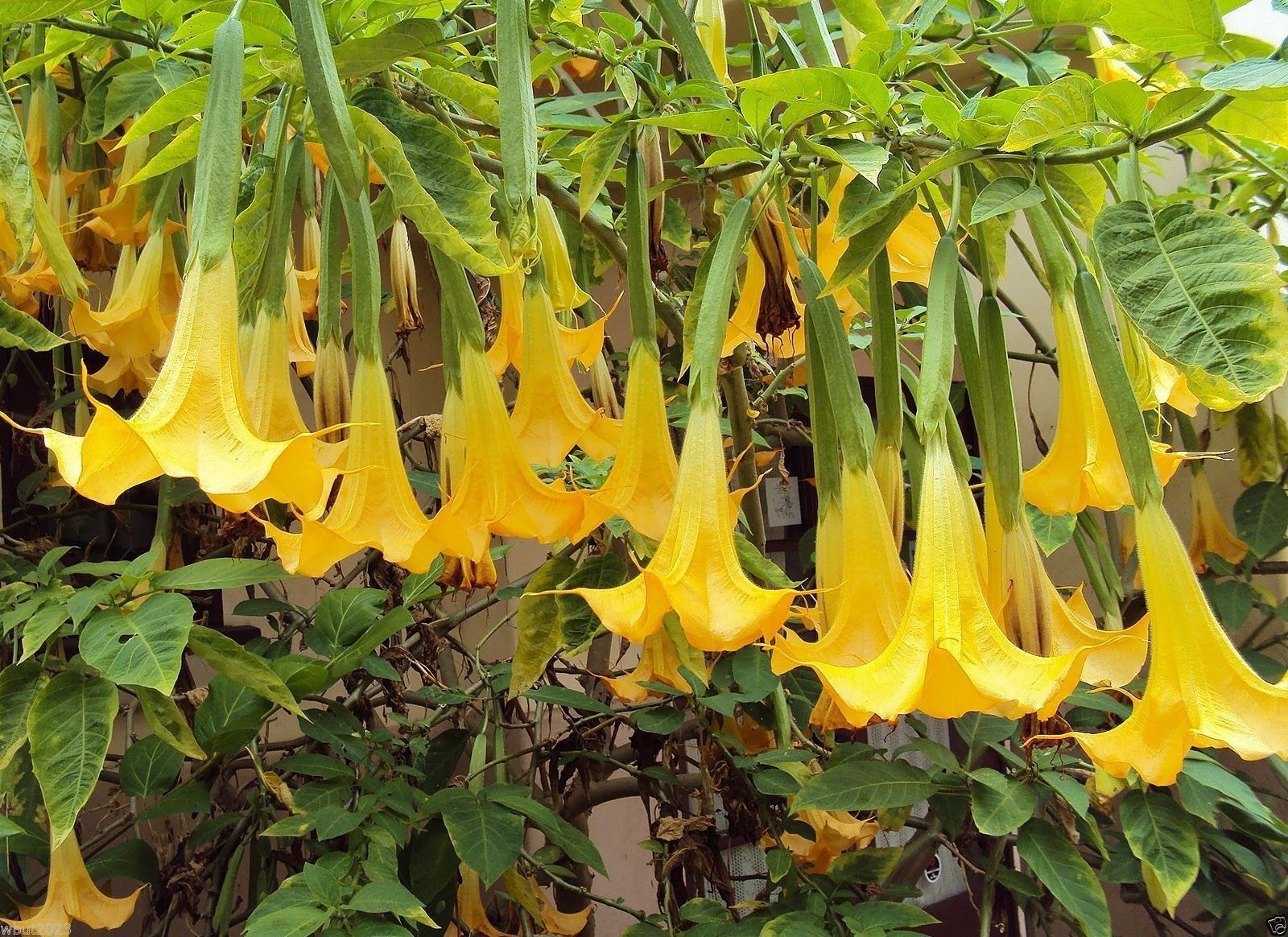Angels and demons in one setting


…it rang and shone, this bush strewn with yellow bells. One could not believe that it was real.
A November day in Agia Pelagia surprised us again with its mystery. “What kind of plant is it?” – asked we the locals. They only shrugged. However, it seems that we have found an answer—thanks to the Internet.

So, our bell orchestras are Brugmansia, strangers from the South American jungle. The origin of them is simple-minded: from the nightshade family, therefore it means an affinity with potatoes and tomatoes. But for their extraordinary beauty (flowers, they say, reach half a meter in length and 20 cm in diameter!) and a noble evening aroma, they are called “trumpets of angels” in many countries. Very many pay attention to the fact that angels – in frescoes (to the Apocalypse of St. John the Evangelist) in the Church of the Assumption of the Virgin Mary in the village of Asklipio in Rhodes – blow trumpets that are in shape very reminiscent of Brugmansia.
By the way, why they have name Brugmansia?
The plant was named after Sebald Justinus Brugmans (1763-1819), a Dutch botanist and doctor, rector of the University of Leiden. It is unlikely that he himself wandered through the South American jungle, but he left of himself such a beautiful memory.

At first, the botanists attributed Brugmansia to the genus Datura, but now Brugmansia are isolated as an independent genus. Their flowers are really similar to Datura flowers, but are directed down, not up. There is also a reason to classify these beauties of angelic appearance as dope: the plant contains alkaloids, which while getting into the human body, cause hallucinations and enter into trance. Since ancient times, Indians used Brugmansia both as a medicine and in various rituals. It was believed that under Brugmansia’s influence a person gains abilities to see the future, find gold, communicate with spirits and even with death itself. So it is not in vain that another name for Brugmansia is “pipes of the devil”. In recent times, due to the content of the alkaloid scopolamine, Brugmansia began to be used for the illicit manufacture of narcotic drugs, and the poor beauties began to be mercilessly exterminated in their homeland, where in the wild they were almost lost. Now the decorative plant continues to be grown in countries with a warm climate, and even in Russia.
There are many types and hybrids of Brugmansia: woody and colorful, fragrant and golden, and others, as much as coloring ones. We recall that “our riddle plant”, was shining like little suns in November, not wanting to fade.
We do not know how widespread Brugmansia are in Crete, but if you happen to visit Agia Pelagia, you will see for yourself, in the central square at the supermarket, how good the “trumpets of angels” are. But be careful and do not forget how “dope” the beauties are sometimes!
Svetlana Zaitseva.